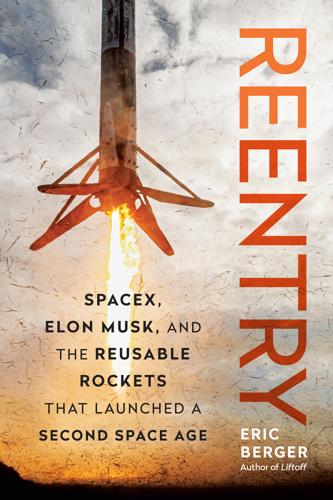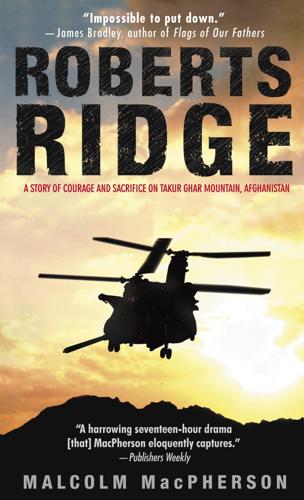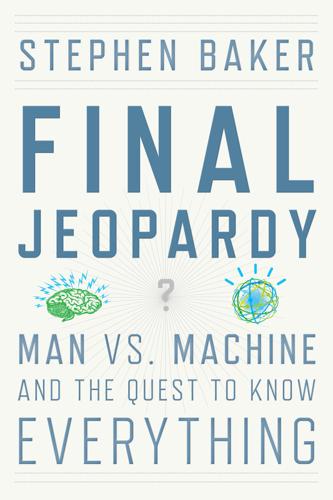Iridium satellite
description: a series of satellites forming the Iridium satellite constellation for voice and data communication around the globe
34 results

Reentry: SpaceX, Elon Musk, and the Reusable Rockets That Launched a Second Space Age
by
Eric Berger
Published 23 Sep 2024
At the end of the twentieth century, with financial backing from Motorola amounting to billions of dollars, Iridium launched a satellite service that enabled telephone calls via satellite phones. But after a number of management missteps, the company filed for bankruptcy. The court erased $4 billion in debt, and the U.S. government agreed to become a customer to help save Iridium from having to deorbit its satellites. A private group of investors took over the company. Several new CEOs had come and gone by the time Desch, a telecommunications executive, was hired in 2006. Iridium was cash flow positive by then, but its original satellites were aging, with perhaps five to ten years of useful lifetime left.
…
Among those mingling outside the seaside hotel was Matt Desch, the Iridium chief executive. He was nervous as hell. Eight years had elapsed since Desch closed the deal to fly his Iridium satellites on the Falcon 9 rocket, and now that day had come. There were only two outcomes. His grand plans could come crashing down into the Pacific Ocean, or the day would be amazing. Desch feared the worst. Iridium originally planned to launch its first two new satellites on a smaller, stubby rocket based on an old Soviet intercontinental ballistic missile. Russia started to sell this Dnepr rocket commercially at the turn of the century to Western customers to loft smallto medium-sized satellites.
…
“When that thing blew up on the pad in Florida, we were supposed to launch a month and a half later,” Desch said. “We were next in the queue.” Iridium had little choice but to take the return-to-flight mission. Iridium’s original satellites were nearly two decades old, and there were almost no spares left in orbit. With the deal for a Dnepr launch falling through and delays to the Falcon 9 rocket after its successive accident, the second-generation Iridium NEXT replacement constellation of satellites was years late in getting to space. Changing rockets also was not a realistic option. Iridium would have had to pay twice the price and taken a year or two to adapt to a different launch vehicle.

The Zenith Angle
by
Bruce Sterling
Published 27 Apr 2004
And if the zenith angle was exactly right, then the solar panels on a passing satellite might gleam down at the Earth for a few precious instants: a flare five times brighter than Venus. DeFanti had extremely personal and very complicated feelings about satellites. Especially Iridium satellites, though spy satellites had always been his premier line of work. He had wanted in on the Iridium project so very badly. He had violently hated the engineers and financiers who had somehow launched a major global satellite communications network without him. And then he’d been astounded to see the whole enterprise simply fold up and collapse. These wonderful Iridium satellites, dozens of high-tech metal birds each the size of a bus, beautifully designed, working perfectly and just as planned, costing more per pound than solid gold: they were glories of technology with no business model.
…
These wonderful Iridium satellites, dozens of high-tech metal birds each the size of a bus, beautifully designed, working perfectly and just as planned, costing more per pound than solid gold: they were glories of technology with no business model. The engineers had built them, and yet no one had come. Earthly cell phones were so much quicker, cheaper, smaller. The bankrupted satellites were doomed to be de-orbited and flung, one by one, into the black, chilly depths of the Atlantic Ocean. This awful fate made the Iridium satellites very precious to DeFanti. The Most Important Man in the World had known some failures of his own, true agonies of the spirit. He never gloated at the wreckage of anybody else’s grand ambitions. He had learned to watch such things with care, searching for men with drive who had the guts to survive the midnight of the soul.
…
He gnawed silently as the rest of them chattered happily. Then Van dumped his bare chicken bone and went out to the Rover. He beeped it open and fetched the Iridium phone. It was heavy and shaped like a brick. Van hadn’t yet had a chance to try out an Iridium phone. The phones were clumsy, expensive, and didn’t work indoors. The Iridium satellite network had gone broke—but at the last minute, the new post-bankruptcy owners had been rescued by the U.S. Defense Department. The U.S. military had suddenly realized that it might be pretty handy to have phones that worked off-road in places like Afghanistan. Now Van would take the plunge for the first time as well.

The New Gold Rush: The Riches of Space Beckon!
by
Joseph N. Pelton
Published 5 Nov 2016
Fig. 3.6Harris Corporation testing a new large aperture antenna design for a mobile satellite (Image courtesy of the Harris Corporation.) However, there are other technical solutions to providing mobile satellite links. The alternative is to deploy a constellation of satellites much closer to Earth’s surface. This is the approach taken by systems known as Iridium (66 satellites plus spares) in low Earth orbit or Globalstar (48 satellites plus spares) in a different configuration. These satellites that are 30–40 times closer to Earth do not have to be as large or have giant antennas to complete a link to users on the ground. In either case the approach taken for all these mobile satellite systems is what might be called technology inversion.
…
Clarke in the 1950s that 1 day people could talk to anyone in the world via a small handheld device has become reality a half century later (see Fig. 3.7). Fig. 3.7Mobile satellite handsets available from Globalstar, Inmarsat and Iridium, respectively (Images courtesy of Globalstar, Imarsat and Iridium.) Today there are a number of mobile satellite networks that can allow communications to handheld devices that cost on the order of $1000 a pop. These systems include Inmarsat, Thuraya, Iridium, Globalstar, Skyterra, and Terrestar. Iridium and Globalstar only provide compressed telephone and limited data at 2.4–4.8 kb/s.
…
The failure of the Falcon 9 on June 28, 2015, due to the breakage of a support strut that secured a helium tank clearly has set back the SpaceX launcher development program and adversely affected the schedule for resupply of the International Space Station, plus had a key impact in the delayed deployment of the Iridium NEXT mobile satellite communications systems. Even so there is no doubt that SpaceX is now seen as a world-class supplier of launch services. The latest innovation that has come from SpaceX is its ability to re-land its Falcon 9 launcher both on the ground and on a sea-based platform. This is seen as the first step to providing reusable rocket launch services.

How Will You Measure Your Life?
by
Christensen, Clayton M.
,
Dillon, Karen
and
Allworth, James
Published 15 May 2012
This means, almost paradoxically, that the time when it is most important to invest in building strong families and close friendships is when it appears, at the surface, as if it’s not necessary. A Spectacularly Big Failure Few companies have launched their product with more fanfare than the Iridium Satellite Network—mobile phones that would allow people to call from literally anywhere on the planet by tapping into a complex celestial network of satellites. Vice President Al Gore helped launch Iridium’s product by placing its first call—to Alexander Graham Bell’s grandson. Iridium was largely funded and managed by Motorola, one of the most highly regarded microelectronics and telecommunications companies in the world.
…
They had defied the odds and managed to convince governments around the world to allocate spectrum to the signals that the satellites needed. Traditional cell phones connected users to each other by relying on towers to relay signals from one to the next. It wasn’t always reliable; if there wasn’t a tower in a critical location that could pass the call along, the system dropped the call. The Iridium strategy, in contrast, would send each call from a customer to a satellite—which would then send the call back to earth, to the intended recipient. If the customer was on the other side of the earth, the satellite would send the signal to another satellite that was positioned to send the call to the recipient. That meant that you could call someone from almost anywhere on earth.

Makers at Work: Folks Reinventing the World One Object or Idea at a Time
by
Steven Osborn
Published 17 Sep 2013
One of them is they’re going to give these cameras to kids. So all kinds of kids can build a wildlife camera to put in their garden or on their windowsill to take a picture of the garden at night. One really cool thing is that they’re going take these and put them in Africa. They’re going to hook them to Iridium satellite phones. That’s what they do. They put them in the field in Africa, with solar-powered batteries and the Iridium phone. They take the infrared filter off the cameras, for a sort of night vision. And they use it to keep track of animals. And they use it to look for poachers. I think the things are going to have microphones, so they can hear gunshots.
…
See Petrone, Emile Todd, Sylvia aerospace engineer age board chief executive officer CNC machine Crazy Putty episode 3D gaming glasses energy points/badges episodic, nonserial show failures favorite project green-tea leather heart iPad app JavaScript stuff Kansas city Khan academy Lilypad heartbeat pendant LOGO programming MythBusters NASA open-source superglue passion photoplethysmography photos polymer chains programming RoboPaint San Francisco Savage, Adam science fair Science Guy silver medal space camp valve WaterColorBot welding White House zombie game U Upton, Eben academic year ASIC-level work Atmel AVR Atmel microcontrollers Broadcom camera use cases charity China market Chinese guys C-like languages computers electrical engineering general-purpose processor hardware problems Iridium satellite phones Model A Model B motor controllers multimedia capabilities night-vision camera NOOBS 4QD Robot Wars signal analog and digital PCBs teaching programming twenty-five-dollar computer UK contract manufacturers wildlife camera project ZSL V Vertical video syndrome W Wealth of Networks X, Y Xbox 360 laptop Z Zoological Society of London (ZSL) Other Apress Business Titles You Will Find Useful Lobbyists at Work Leech 978-1-4302-4560-5 Lawyers at Work Cosslett 978-1-4302-4503-2 Women Leaders at Work Ghaffari 978-1-4302-3729-7 Inventors at Work Stern 978-1-4302-4506-3 CIOs at Work Yourdon 978-1-4302-3554-5 Advertisers at Work Tuten 978-1-4302-3828-7 Venture Capitalists at Work Shah/Shah 978-1-4302-3837-9 CTOs at Work Donaldson/Siegel/Donaldson 978-1-4302-3593-4 European Founders at Work Santos 978-1-4302-3906-2 Available at www.apress.com

Exponential Organizations: Why New Organizations Are Ten Times Better, Faster, and Cheaper Than Yours (And What to Do About It)
by
Salim Ismail
and
Yuri van Geest
Published 17 Oct 2014
And, Motorola concluded, if just a million people in various developed countries paid $3,000 for a satellite phone, plus a $5-per-minute usage fee, the satellite network would quickly become profitable. Of course, we now know Iridium failed spectacularly, ultimately costing its investors $5 billion. In fact, the satellite system was doomed before it was even put in place, one of the most dramatic victims of technological innovation. There were several reasons behind Iridium’s failure. Even as the company was launching its satellites, the cost of installing cell phone towers was dropping, network speeds were increasing by orders of magnitude, and handsets were shrinking in both size and price.
…
To fully comprehend the sheer acceleration we’re seeing, recall the $10 billion in investment that was lost on Iridium and other satellite efforts in the 90s. Today, twenty years later, a new breed of satellite companies—Skybox, Planet Labs, Nanosatisfi and Satellogic—are all launching nanosatellites (which are, essentially, the size of a shoebox). The cost per launch is about $100,000 per satellite—a fraction of the $1 billion Iridium incurred per launch for its constellation. More important, by launching a cluster of nanosatellites operating in a coordinated, meshed configuration, the capability of these new satellites blows away what the previous generation could do.
…
These two advantages, plus your own initiative, offer good odds for being a winner in the new world of Exponential Organizations. Part One Exploring the Exponential Organization In this segment, we’ll explore the characteristics, attributes and implications of Exponential Organizations. CHAPTER ONE Illuminated by Information While the original Iridium Moment caused enormous embarrassment for the satellite industry, you may be surprised to learn that there have been many similar but less-publicized Iridium moments in the mobile phone industry. For example, because mobile phones in the early 80s were bulky and expensive to use, renowned consulting firm McKinsey & Company advised AT&T not to enter the mobile telephone business, predicting there would be fewer than one million cellular phones in use by 2000.

Why Startups Fail: A New Roadmap for Entrepreneurial Success
by
Tom Eisenmann
Published 29 Mar 2021
Recall how Better Place’s 2008 survey of one thousand Israeli car owners indicated that 20 percent would consider buying a Better Place vehicle, implying an addressable market of four hundred thousand. Actual sales when Better Place shut down: one thousand. Iridium is another example of a moonshot that suffered from a gross miscalculation of demand. Founded in 1998 with the mission of providing satellite phone service anywhere on the planet, the venture built upon years of R&D work within Motorola, its lead backer. Before Iridium launched sixty-six satellites into space, Motorola hired several consulting firms to study the market for satellite phone service. Their surveys identified a potential market of forty-two million “wireless addicted” traveling professionals, many of whom were supposedly eager to own a satellite phone.
…
Second, rivals working on similar solutions will announce their plans, forcing teams to decide whether to take the extra time to match them, or risk a feature gap. Iridium’s satellite phones, for example, were originally conceived in the late 1980s, when terrestrial cellphone service was expensive and had limited geographic reach. But by the time Iridium launched in 1998, terrestrial cellular services were far more widely deployed, and the customers Iridium targeted were rarely out of their cellphone’s roaming range. Another drawback was that Iridium’s phones required a clear line of sight to an orbiting satellite to send and receive signals. This meant that—unlike cellphones—they didn’t work inside buildings and weren’t reliable on the streets of urban “canyons” enclosed by tall buildings.
…
Likewise, escalation of commitment is broadly consistent with a threat-rigidity response: a tendency by individuals or organizations, when under duress, to revert to a familiar strategy rather than search for a new one, as described in Barry Staw, Lance Sandelands, and Jane Dutton, “Threat-Rigidity Effects in Organizational Behavior: A Multilevel Analysis,” Administrative Science Quarterly 26, no. 4 (1981): 501–524. Iridium is another example: Details in this paragraph are from John Bloom, Eccentric Orbits: How a Single Man Saved the World’s Largest Satellite Constellation from Fiery Destruction (New York: Atlantic Monthly Press, 2016); market research projections are described on p. 196 and the $6.4 billion investment is cited on p. 209. “If I had asked people”: Patrick Vlaskovits, “Henry Ford, Innovation, and That ‘Faster Horse’ Quote,” Harvard Business Review blog, Aug. 29, 2011.

Roberts Ridge
by
Malcolm MacPherson
Published 29 Aug 2005
Against his better judgment, he tried to start a fire to warm Turbo, whom Slab had tucked up against a tree. But then Slab thought, Dude, this is wrong, and even before it started to smoke, he put the fire out. They moved out again, dragging Turbo over the next three hours for another 1,500 feet, until he could be moved no further. Hyder took the Iridium satellite phone to higher ground to see who might answer. He tried calling the TOC at Bagram, but the phone was turned off. Hyder remembered the number of the SEAL base in Virginia Beach, Virginia, half a world away. He dialed and the communications room answered, surprised when he said, “This is Hyder, troops in contact, need you to go get the DCO.”

Zeitgeist
by
Bruce Sterling
Published 1 Nov 2000
.… I assumed they were processing heroin in there.” “That would make sense.” “What’s that burning smell?” Zeta said, lifting her chin from the toothmarked rim of her white valise. Starlitz locked the two valises in the boot of the rental car and pocketed the keys. “You got a gun?” he asked Viktor. “No, you?” “I got an Iridium satellite phone,” Starlitz offered, hefting it from beneath the seat. Its tough case and monster battery gave it the heft of a blackjack. “Let’s go buy some big guns!” Zeta suggested chirpily. “We’ve got lots of money.” The little mill village had not been entirely deserted. There were trimmed orange trees here and there, stone walls still kept up, a couple of modest truck farms.

Endure: Mind, Body, and the Curiously Elastic Limits of Human Performance
by
Alex Hutchinson
Published 6 Feb 2018
Worsley was camped just 34 miles from Shackleton’s turnaround latitude, and he marked the anniversary with a small cigar—which he chomped with a gap-toothed grin, having lost a front tooth to a frozen energy bar a few days earlier—and a dram of Dewar’s Royal Brackla Scotch whiskey, a bottle of which he had hauled across the continent. Of the many advantages Worsley had over Shackleton, perhaps the most powerful was the Iridium satellite phone he carried in his pack, with which he could choose at any moment to call for an air evacuation. But this blessing was also a curse. In calculating his limits, Shackleton had been forced to leave a margin of error due to the impossibility of predicting how the return journey would go. Worsley’s access to near-instantaneous help, on the other hand, allowed him to push much closer to the margins—to empty his tank day after day, after struggling through the snow for 12, 14, or 16 hours; to ignore his increasing weakness and 50-pound weight loss; to fight on even as the odds tilted further against him.

Rocket Billionaires: Elon Musk, Jeff Bezos, and the New Space Race
by
Tim Fernholz
Published 20 Mar 2018
It was also a crowded market: besides Teledesic, firms like Iridium and Globalstar were also planning to fly large communications constellations, worrying investors who saw the already risky plays as being locked into a suicide pact. All three companies would go bankrupt; Iridium and Globalstar would reemerge several years later as key players in the satellite industry. The entire satellite brain trust—and the world at large—were taken by surprise by mobile phones. As telecoms swept around the world to expand high-capacity cellular networks—ground-based antennae linked to fiber-optic cables—they gobbled up a huge amount of the prospective market for satellite communications.
…
This fast-moving digital revolution had brought together the two key ingredients in space exploration: huge amounts of capital and plenty of eager dorks. Computers were beginning to dominate the economy completely, at least in the minds of the people in the industry. So why not start hurling them into space? The proliferation of satellite schemes—Teledesic, Iridium, SkyBridge, Globalstar—implied rising future demand for rockets to get the satellites into orbit. Eyeing these schemes in the midnineties, as they developed proposals for new rockets, Lockheed Martin, McDonnell Douglas, and ultimately Boeing were able to promise vehicles that, by the weird pricing standards of high-explosive space vehicles, were fairly cheap.
…
After that, engineers torture-tested the Falcon 9’s carbon-wrapped tanks and found an approach to fueling the vehicle that satisfied the FAA, NASA, and the Air Force. SpaceX returned to flight, after a four-month break, in January 2017, launching ten satellites into low earth orbit for Iridium, delivering another load of supplies and science experiments to the International Space Station, and plunking a satellite into geostationary orbit for EchoStar. While the last satellite was too heavy to allow a landing, the first two missions ended with the Falcon 9 booster returning to earth. The landings were becoming routine. Between its first successful landing, in December 2015, and March 2017, SpaceX had brought back eight of its Falcon 9 rocket boosters to floating landing barges or to the ground pad at Cape Canaveral.

12 Strong: The Declassified True Story of the Horse Soldiers
by
Doug Stanton
Published 16 Apr 2009
Same with the clothes, and when the dealers ran out—as they did with a particular black fleece jacket everyone wanted—the guys called North Face headquarters and bought direct. There were soldiers perusing back issues of Shotgun News magazine and ordering pistol holsters and ammo magazines for AK-47s. They bought CamelBak water hydration systems, thermoses, water filters, tan winter boots made by a company called Rocky’s, duffel bags, Iridium satellite phones, generators, tool kits, compressors, electric conversion kits to convert 12-volt DC to 110-volt AC, camp stoves, fuel, and headlamps. Staff guys carried new radios and laptops and PDAs into team rooms, gizmos the men had never seen before. The guys liked the lightweight Garmin Etrex GPSs—the military GPS being heavy and the size of a writing tablet—and couldn’t purchase enough, ordering them all over the country, three hundred to four hundred at a time.

Boyd: The Fighter Pilot Who Changed the Art of War
by
Robert Coram
Published 21 Nov 2002
It was one of the greatest moments of his life to see that the airplane whose design he influenced was the only aircraft in the theater that could have brought its pilot home after suffering such damage. Ray Leopold is vice president and chief technology officer of Motorola, where he continues to be an achiever. He was one of three engineers who created the iridium satellite-based cell-phone network and is a much-sought-after speaker at technical and telecommunications symposia. Leopold holds twenty-six U.S. patents and has patents issued or pending in about fifty countries. He is a senior lecturer at MIT. He lives in Arizona and keeps in touch with the other Acolytes.

The Bin Ladens: An Arabian Family in the American Century
by
Steve Coll
Published 29 Mar 2009
Around 1987, while conducting experiments in the Arizona desert, Motorola engineers conceived the idea that would become Iridium—a network of satellites that orbited at a lower altitude than most others and that could assume the role normally played in telephony by ground-based switching and routing systems. By 1991 Motorola had developed the outlines of a business plan, one that would ultimately cost more than $5 billion to carry out. The corporation eventually spun off Iridium as a separate business, but Motorola designed and built the satellites it would use, under a fixed-price contract worth about $3.5 billion. It was a grandiose project infused with risk and uncertainty.3 Motorola’s executives approached major phone companies in Europe and Asia, seeking investors.
…
By 1990, particularly in America, there were competing visions—and competing business plans—describing how telephone portability might be constructed in the most practical and profitable way. There were those who believed globally linked cellular towers, erected on the earth’s surface, might offer the most efficient path. And then there was Iridium, named for a rare element with the atomic number 77, which was the number of low-earth orbiting satellites the company’s founders believed they would need to launch into space to provide worldwide telephonic connections, so that an Iridium owner might use his phone anywhere on the planet, at any time, to dial any telephone number. In 1945 the budding science fiction writer Arthur C.
…
(He was already the liaison to the Saudi Bin Laden Group’s American office in suburban Maryland, and he also traveled regularly to Texas on assignment, where he helped oversee the refurbishment of Saudi Air Force planes at a U.S. facility.) Iridium Middle East opened a small office in the Georgetown neighborhood of Washington. Two or three young Arabs with backgrounds in economics worked there, keeping in touch with Iridium headquarters as the satellites were built and launched, and as consumer marketing plans developed. Hassan joined the Iridium board of directors and flew to the United States for quarterly board meetings.6 He was a clean-shaven, congenial man in his late thirties or early forties who seemed to live nocturnally.

Green Swans: The Coming Boom in Regenerative Capitalism
by
John Elkington
Published 6 Apr 2020
In 1996, though, a French satellite was hit and damaged by debris from a French rocket that had exploded a decade earlier. Poetic justice, perhaps, but also a warning of what is to come. Then on February 10, 2009, a defunct Russian satellite collided with and destroyed a functioning US Iridium commercial satellite. The collision added more than 2,000 pieces of trackable debris to the inventory of space junk. Next, while I was in that country, China carried out its 2007 antisatellite test, using a missile to destroy an old weather satellite. This single act, unlikely to be welcomed by future space travelers, added more than 2,300 trackable pieces of junk, more than 35,000 pieces larger than a thumbnail, and perhaps hundreds of thousands of pieces too small to track.37 So who has the worst space-littering record to date?

Against All Enemies
by
Tom Clancy
and
Peter Telep
Published 13 Jun 2011
Moore and his young recruit Rana had observed three men near a stand of trees on the hilltop, but these men were too low and too far away to see their faces, even with binoculars. Rana assumed that they were Taliban fighters, sentries on the perimeter, and Moore agreed. He and Rana hiked back across the foothills, down into a ravine, then up to high ground, from where Moore made a call with his Iridium satellite phone. The mountainous terrain interfered with reception if he got too deep into the cuts and ravines, but he usually picked up a clean signal from the mountaintops, where, of course, he was more vulnerable to detection. He reached the detachment commander of an ODA (Operational Detachment Alpha) team, one of the Army’s elite Special Forces groups.

On the Trail of Genghis Khan: An Epic Journey Through the Land of the Nomads
by
Tim Cope
Published 23 Sep 2013
There are many other friends and supporters who have helped me greatly, including my former English and history teacher Rob Devling, longtime friends Cordell Scaife, Ben Kozel, and Todd Tai, and more recent friend Joss Stewart. Thanks to the many others not mentioned here. Lastly, it would never have been possible to carry out this journey without the support of sponsors. I would like to thank the following: MAIN SPONSORS Iridium, satellite phone communications Internetrix.net, particularly support from Daniel Rowan Saxtons Speaking Bureau, especially Nannette and Winston Moulton The Australian Geographic Society MEDIUM-LEVEL SPONSORS Bogong Horseback Adventures (Victoria, Australia) Horses and Horsemen (Margaret River, Western Australia) Odyssey Travel Mountain Designs Spelean Australia, distributors of such brands as MSR, Therma-Rest, and Platypus Reflex Sports Fujifilm, with special thanks to Graham Carter and Darren at CPL Digital Services, Melbourne.

Not a Good Day to Die: The Untold Story of Operation Anaconda
by
Sean Naylor
Published 1 Mar 2005
So rather than fight their attackers off, they meekly surrendered to the tribesmen, who took whatever they wanted from the vehicle. (The joke around the rest of TF 11 was the episode resembled the scene in the movie Stripes in which Bill Murray’s hapless American troops surrender their weapons to the Czech police.) The only long-range communications system the SEALs had was an Iridium satellite telephone. But they had neglected to bring the number for the TF Blue TOC in Bagram. Hyder was left with little choice but to call the SEAL Team 6 headquarters in Dam Neck, Virginia, and ask them to call Bagram for help. Pulling the SEALs out of that sort of jam would usually be a job for the Ranger quick reaction force.

When Things Start to Think
by
Neil A. Gershenfeld
Published 15 Feb 1999
While China was busy worrying about whether to allow official Internet access, packets were already being sent through a satellite link that had been set up for high-energy physics experiments. Now constellations of low-earth-orbit satellites are being launched that will bring the convenience of a cell-phone network everywhere on the globe. Motorola's Iridium system comprises 100 + WHEN THINGS START TO THINK sixty-six such satellites. (It was originally named after the seventyseventh element, iridium, because it was going to have seventyseven satellites, but when it was reduced to sixty-six satellites the name wasn't changed because the sixty-sixth element is dysprosium.) Governments, and private companies, are launching spy satellites for commercial applications.

Black Code: Inside the Battle for Cyberspace
by
Ronald J. Deibert
Published 13 May 2013
However, some intelligence observers speculate that U.S. and other signals intelligence agencies have capabilities to tap undersea fibre-optic cables by cutting into them and collecting information through specifically designed splitters. • • • Like undersea cables, satellites illustrate the fragile nature of cyberspace. In 2009, a defunct and wayward Russian satellite collided with an Iridium low Earth orbit satellite at a speed of over 40,000 kilometres per hour. The collision caused a massive cloud of space debris that still presents a major hazard. NASA’S Earth observation unit tracks as many as 8,000 space debris objects of ten centimetres or more that pose risks to operational satellites. (There are many smaller objects that present a hazard as well.)

Losing the Signal: The Spectacular Rise and Fall of BlackBerry
by
Jacquie McNish
and
Sean Silcoff
Published 6 Apr 2015
But the communications giant was preoccupied with corporate restructuring and lost interest in what it considered a niche messaging market. Also, Motorola was convinced the future of wireless communications lay in outer space, investing heavily in a consortium of satellites called Iridium to provide global wireless phone service. The project was plagued with challenges. Satellite phones were too expensive at $3,000 each and service was spotty.8 Iridium filed for bankruptcy in 1999, and Motorola wrote off billions of dollars it had invested in the company. With competitors preoccupied or looking elsewhere, the long-shot from Waterloo moved into the lead of a race for mobile data business that everyone had underestimated.

Principles of Corporate Finance
by
Richard A. Brealey
,
Stewart C. Myers
and
Franklin Allen
Published 15 Feb 2014
The company’s return on this investment comes within months as the inventory is drawn down and the goods are sold. In addition, financial managers know (or quickly learn) that cash returns are not guaranteed. An investment could be a smashing success or a dismal failure. For example, the Iridium communications satellite system, which offered instant telephone connections worldwide, soaked up $5 billion of investment before it started operations in 1998. It needed 400,000 subscribers to break even, but attracted only a small fraction of that number. Iridium defaulted on its debt and filed for bankruptcy in 1999.
…
• A pharmaceutical-company scientist worries about the risk that a new drug will have unacceptable side effects. • A plant manager worries that new technology for a production line will fail to work, requiring expensive changes and repairs. • A telecom CFO worries about the risk that a communications satellite will be damaged by space debris. (This was the fate of an Iridium satellite in 2009, when it collided with Russia’s defunct Cosmos 2251. Both were blown to smithereens.) Notice that these risks are all diversifiable. For example, the Iridium-Cosmos collision was definitely a zero-beta event. These hazards do not affect asset betas and should not affect the discount rate for the projects.

Smart Grid Standards
by
Takuro Sato
Published 17 Nov 2015
IEEE (2011) IEEE approves IEEE 802.16m™ – Advanced Mobile Broadband Wireless Standard, 31 March 2011, http://standards.ieee.org/news/2011/80216m.html (accessed 5 January 2013). Iridium Iridium NEXT, Iridium Communications Inc., www.iridium.com/About/IridiumNEXT .aspx (accessed 6 January 2013). Gohn, B. and Wheelock, C. (2010) Smart Grid Network Technologies and the Role of Satellite Communications, Pike Research LLC, Boulder, CO. Inmarsat (2012) BGAN M2M, Inmarsat plc, www.inmarsat.com/services/bgan-m2m (accessed 5 January 2013). Iridium (2010) Iridium Short Burst Data Service, Iridium Communications Inc. Orbcomm (2013) Satellite M2M, www.orbcomm.com/services-satellite.htm, (accessed 6 January 2013). 7 Security and Safety for Standardized Smart Grid Networks 7.1 Introduction Control and monitoring networks of Smart Grids form the infrastructure of a country that can meet the requirements of the production and life of humans.
…
Low Earth Orbit (LEO) is between 160 and 2000 km of altitude and the LEO satellites do not require terminals with antenna pointing, which makes these systems very suitable for handheld and portable terminals. As the orbital period is very short (less than 2 h), LEO satellites create satellite constellations, which consists of tens of satellites to deliver required coverage. Examples of such systems are Globalstar, Iridium, and Iridium Next, which is planned to be launched in 2015 and replace its ancestor [93]. Another LEO satellite system, Orbcomm, operates in the 137–150 MHz VHF band and provides a global M2M platform for asset tracking, management, and remote control. Highly elliptical orbit (HEO) is an elliptic orbit with a perigee of 1000 km and an apogee of about 40 000 km.
…
These are just some examples of many potential applications enabled by satellite systems for the Smart Grid [94]. Many current satellite systems have recently started to provide their M2M services to utilities. For example, Inmarsat has launched BGAN M2M service [95], Iridium’s Short Burst Data service is being used for M2M and remote sensing [96], and Orbcomm launched Satellite M2M service [97] recently. Besides a role of a primary connectivity provider, satellite systems provide an excellent solution for robust communication as a backup infrastructure for critical communications, emergency services, and services in disaster-prone areas and areas without sufficient communication infrastructures. 6.5 Conclusion Requirements for different applications of the Smart Grid vary significantly from low bandwidth and delay-tolerant traffic for periodical metering to “mission critical” low-latency traffic for blackout prevention and emergency situations.

Frommer's California 2007
by
Harry Basch
,
Mark Hiss
,
Erika Lenkert
and
Matthew Richard Poole
Published 6 Dec 2006
If you’re venturing deep into national parks, you may want to consider renting a satellite phone (“satphone”). It’s different from a cellphone in that it connects to satellites rather than ground-based towers. Unfortunately, you’ll pay at least $2 per minute to use it, and it will only work where you can see the horizon (which is to say outdoors). In North America, you can rent Iridium satellite phones from RoadPost (www.roadpost.com; & 888/ 290-1606 or 905/272-5665). InTouch USA (see above) offers a wider range of satphones but at higher rates. GETTING THERE If you’re not American, you’ll be appalled at the poor reach of our GSM (Global System for Mobiles) wireless network, which is used around much of the world.

God Is Back: How the Global Revival of Faith Is Changing the World
by
John Micklethwait
and
Adrian Wooldridge
Published 31 Mar 2009
He spent a lot of time in his house in Orlando, Florida. He embraced all the technologies of modernity, from mobile phones to airplanes, which he piloted with daredevil enthusiasm. (He eventually died when he lost control of a plane that he was piloting in Florida.) His brother, Hassan bin Laden, was one of the biggest shareholders in Iridium, a pioneering satellite telephone company. He was also a major shareholder in the Hard Rock Café Middle East, which brought the tacky music-themed restaurants to the region.11 The bin Ladens were also central to the modernization of Mecca, building roads to take the faithful to and from their destination, installing air-conditioning in the holy sites in conjunction with an American company based in Pennsylvania, and constructing several five-star hotels and restaurants.12 Not all members of the family were so enamored with America, however.

Final Jeopardy: Man vs. Machine and the Quest to Know Everything
by
Stephen Baker
Published 17 Feb 2011

Practical Doomsday: A User's Guide to the End of the World
by
Michal Zalewski
Published 11 Jan 2022
It’s also possible to request emergency help from the authorities, which may not accomplish much in a large-scale disaster, but could prove invaluable when injured or lost on a remote hike. Some aspects of the messaging service depend on terrestrial infrastructure; the satellites merely relay the signal between the subscriber and the hub. After some sleuthing, I believe that the primary Iridium communications gateway is located in Tempe, Arizona, while their satellite control facility is in Leesburg, Virginia. The location of Garmin inReach servers is more difficult to divine because of the way they’re set up, but the company does have some data-center technician jobs in Olathe, Kansas. Several of their other job listings also mention Azure, a cloud-based environment run by Microsoft; the Azure data center nearest to Garmin headquarters is in West Des Moines, Iowa, so it could be a natural pick.

When the Heavens Went on Sale: The Misfits and Geniuses Racing to Put Space Within Reach
by
Ashlee Vance
Published 8 May 2023
Musk and others keep launching their rockets and satellites while people on the ground below spend months or years debating the regulatory merits of the various constellations. No one knows if the business case of the space internet makes any fiscal sense. In the late 1990s, a company called Iridium spent $5 billion to put up eighty satellites for an early crack at a space internet system. Creating a network in space at a time when the consumer internet and cell phones were taking off proved a terrible idea. The company’s subsequent bankruptcy scared all comers off of dreaming up anything so ambitious until Planet came along twenty years later and offered evidence that the times had changed.

Some Remarks
by
Neal Stephenson
Published 6 Aug 2012
If satellites and launches were cheap, a more easygoing attitude toward their design and construction might prevail. But in general they are, pound for pound, among the most expensive objects ever made even before millions of dollars are spent launching them into orbit. Relatively mass-produced satellites, such as those in the Iridium and Orbcomm constellations, cost on the order of $10,000/lb. The communications birds in geostationary orbit—the ones used for satellite television, e.g.—are two to five times as expensive, and ambitious scientific/defense payloads are often $100,000 per pound. Comsats can only be packed so close together in orbit, which means that there is a limited number of available slots—this makes their owners want to pack as much capability as possible into each bird, helping jack up the cost.

The 4-Hour Workweek: Escape 9-5, Live Anywhere, and Join the New Rich
by
Timothy Ferriss
Published 1 Jan 2007

How to Make a Spaceship: A Band of Renegades, an Epic Race, and the Birth of Private Spaceflight
by
Julian Guthrie
Published 19 Sep 2016

The Transparent Society: Will Technology Force Us to Choose Between Privacy and Freedom?
by
David Brin
Published 1 Jan 1998
The same holds for railroads—one created a subsidiary called MCI. Their chief competitor in the short term will be cable television operators, whose “cable modem” capabilities may dominate the field in the immediate future. 34 ... new era of wireless communication ... A consortium led by Motorola is creating the “Iridium Project,” whose sixty-six low-orbiting satellites will offer worldwide digital telephony service. Another group, Teledesic, involving Microsoft and McCaw Communications, has the more ambitious aim of using hundreds of satellites to transfer data, and even real-time video, between millions of users all over the globe. 37 ... midwifing something that might ultimately distribute authority ...

Execution: The Discipline of Getting Things Done
by
Larry Bossidy
Published 10 Nov 2009
That’s part of a productive strategic planning exercise. Many strategies fall apart because the right critical issues aren’t raised. AT&T’s critical issues included the decline in long-distance revenues and the organizational capability to execute a major shift in strategy. The Iridium consortium—the joint effort of Motorola and TRW to develop a satellite telecommunications system able to link phones worldwide—confronted two critical issues. One was how to create enough demand to bring prices down enough to build a sizable market; the other (related to the first) was to develop handheld units small enough that consumers would be able to conveniently carry them around.

Realizing Tomorrow: The Path to Private Spaceflight
by
Chris Dubbs
,
Emeline Paat-dahlstrom
and
Charles D. Walker
Published 1 Jun 2011
Zubrin and Clapp were already working on the Black Horse and Black Colt projects for the Air Force, and commercial prospects for private launch companies had never looked better. In 1995 the telecommunications boom was in full swing. Mega-telecommunications companies like Iridium and Teledesic were fueling the market for big launch systems, with plans to launch more than a thousand communication satellites. So that same year, Lauer, Clapp, and Zubrin put together the business plan for what would be called Pioneer Rocketplane. The launch system would consist of a reusable first stage plane and an expendable second stage to take satellite payloads to orbit.